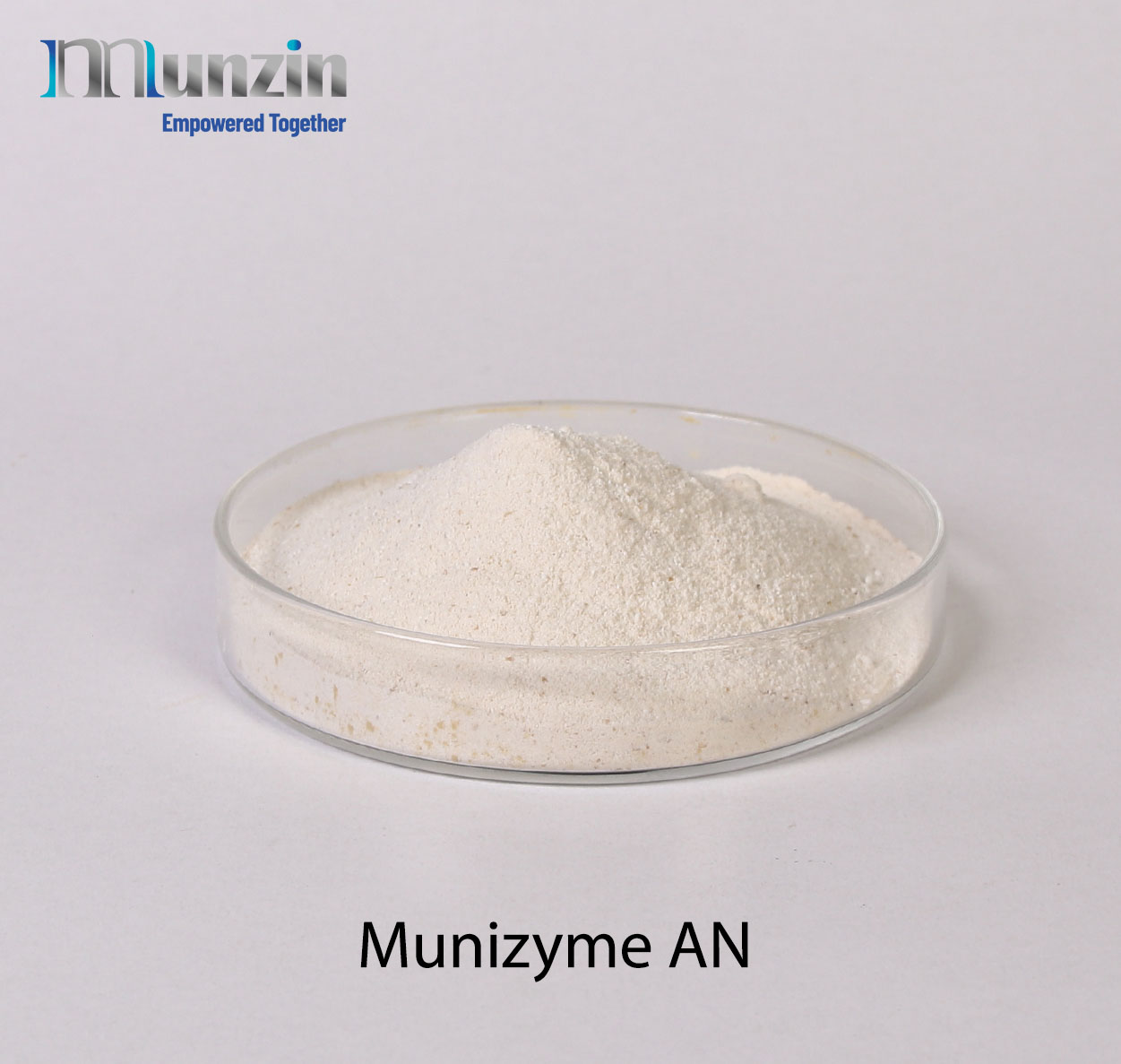Description
Specification
| Appearance | Whitish Powder |
| Trade form @ 20˚C | powder |
| Solid Content, % | 100 |
| Activity | 15000 lvu |
| pH (1:10 solution) | 7 – 7.5 |
| Safety | According to the best of our experience, it does not have any harmful effect on health |
| Packing | 25 KG PE Bags |
| Shelf life | 1 year |
Applications & Recommendations
Wet blue can be treated with Munizyme AN to level out the differences of the raw material and to improve the evenness and shade intensification of the dyeing. Also when our wet blue needs extra bating by this agent it is get-at-able.
An acidic bate with Munizyme AN is particularly recommended for wet blue showing a very compact and irregular fiber structure such as calf or goat skins.
It improves the evenness of the leather due to a better opening up of the fibers.
Using of Munizyme AN often expands the cuttable area (yield area) to the normally loose belly area.
General recommendations for the use of Munizyme AN:
Pickled sheepskins:
Percentages are based on pickled weight:
Depickle:
100% Water 30˚C
5% Salt 10′ Be=5
2% Sodium Formate
0.2-0.3% Soda Ash 5′
Add pelts 30′
Drain float
Bate:
50-100% Water 30˚C
1-2% Sodium Formate
0.4-0.5% Munizyme AN
2% Munipal DGS (nonionic solvent degreasing agent) or Munipal 642 (nonionic degreasing agent)
90-120′ pH=3.5-4
Further processing as usual.
Wet blue goat skins:
Percentages are based on shaved weight:
Wash:
200% Water 40˚C
0.3% Munipal 642
Drain float
20′
Bate:
150% Water 40˚C
0.5% Munizyme AN
Overnight on automatic
Drain float
Further processing as usual
pH = 3.5-4
Wet blue calf skins or hides:
Percentages are based on shaved weight:
After rechroming as usual
Neutralization:
150% Water 35˚C
2% Sodium Formate
1-1.5% Neutralization Syntan 60′
0.5-1% Sodium Bicarbonate 3×15′ pH = 5.5
0.5% Munizyme AN 90′ Drain and washing
Further processing as usual
Advantages
- Anti-wrinkling properties for both pickled hides and skins and wet blues.
- Remove the fold marks in pickled skins and wet blues.
- Noticeably increase the tear strength.
- Improve the smoothness and softness of grain.
- Increase the shade intensification of the dying.
- Increase the yield area (between 3-5%).
Storage Conditions
The product should be well sealed and must be stored in covered area between 5-25°C. Freezing and direct sun light must be avoided.





